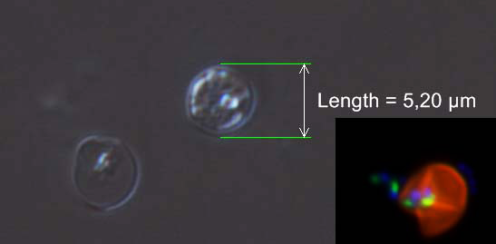The H4DC project is structured by 3 differents aspects with their own outputs.
Approach and Outputs of H4DC
Detect and Limit parasite dissemination in farms.
One of the unique features of H4DC project stands in the co-development methodology with farmers (at least 10 to 15 per country: NL, BE, FR, UK). They will be integrated, from the onset, in the thought process to develop pilot farms, which are suited to the actual situation in fields and set them up across the 2 seas area. It will help to find the most adapted solution to reduce spreading risks of Cryptosporidium. Furthermore, these pilot farms will allow to define health and financial benefits of the solutions found. In parallel, researchers will create a low-cost and easy-to-use pilot in-situ parasite detection system, which can be used by farmers as well as be produced by biotech companies.

OUTPUT N°1
-50% of parasites excreted in environment
Decrease diarrheic calve mortality rate from 14% to 5%
An economic benefit ranging from 7,7 to 78 million €/year
-50% of contaminated
animals
OUTPUT N°2
Having a detection kit with a targeting sensitivity and specificity of 100%
Reduce the number of false negative/positive results to less than 1%
Raise of the TRL (Technology Readiness Level)
from 4 to 7
Increase the use frequency of Cryptosporidium detection test in farms
DEVELOP TOOLS TO FIND QUICKLY DRUGS AGAINST CRYPTOSPORIDIOSIS

Copyright- Jérôme Follet
Nowadays, no efficient drugs exist to struggle against Cryptosporidium as there are no tools to detect automatically the molecules activities against the parasite. However, searchers involved in H4DC (YNCREA/CNRS/IEMN) have developed an electronic microsystem able to measure the electric answer from cells infected by Cryptosporidium. The goal of H4DC is to adapt this electronic Cryptosporidium-viability monitoring micro-system, applicable as standard to pharmaceutical laboratories to characterize rapidly potential therapeutic compounds.
OUTPUT N°3
Multiply the number of analyses conducted per day (from dozen to hundreds per day)
Reduce the time
required to obtain results
from 72h to 24h
Reduce the overall
costs to develop
new drugs
Being able to test more than 1200 compounds from a library of FDA-approved drugs
GUARANTEE THE TECHNOLOGY TRANSFER OF THE DEVELOPED TOOLS IN THE FUTURE
It is essential to adapt from the conception, the developed tools to existing demands of the main market’s actors (biotechnology and pharmaceutical companies). Consequently, H4DC’s partners will manage a market study of detection tools linked to business model and strategies to transfer technologies to the end users. Results of H4DC’s project will be disseminated by business trades or scientific conferences.




